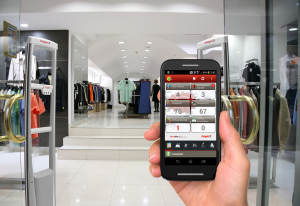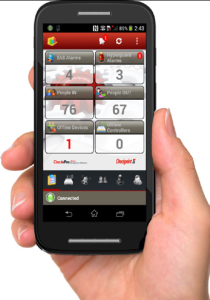 You know, sometimes we seem to overthink EAS tagging. Very often, I find that my store managers will focus so heavily on tagging a small, inexpensive (but high shrink) item, that they completely overlook the big ticket item that is absent of any physical security measure. Why is that? A large cooler is just as susceptible to loss as a pair of socks. Maybe it has to do with the perception of what is driving shrink in our stores.
You know, sometimes we seem to overthink EAS tagging. Very often, I find that my store managers will focus so heavily on tagging a small, inexpensive (but high shrink) item, that they completely overlook the big ticket item that is absent of any physical security measure. Why is that? A large cooler is just as susceptible to loss as a pair of socks. Maybe it has to do with the perception of what is driving shrink in our stores.
Just last month, I hosted a district LP conference for store managers in my area. I asked each store manager to write on a sheet of paper what they felt their highest shrink item was in there stores. The results were pretty shocking. Not a single one got it right. Heck, they weren’t even close. Most of them hovered around the small items that they knew were being stolen on a daily basis; like pocket knives, wrist watches, socks/underwear, etc. These are also the areas that they are focusing their EAS tagging at.
What most didn’t realize was how high their highest shrink categories actually were. So what I found was that they all had a perceived vision of shrink in their store, and instead of using the reporting given to them, they were mostly making business decisions based off of their own emotions. We all know how that can end up, right? So how can you avoid falling into this trap?
Most companies give their managers some level of reporting that showcases their sales as well as shrink. It’s best to use these reporting tools to help plan on what you’re going to tag with an EAS device. For example, if you’re looking at your shrink report and each week you have hundreds of dollars of losses in a certain style of headphones, well it’s probably time to wrap a Spider Wrap around them.
Additionally, sometimes, you have to use your years of experience in order to be pro-active to potential losses. Let’s say your in store reporting shows you have historically seen losses from high end footwear. It’s spring time, and you begin to receive this year’s new high end shoe line. It would probably be a wise idea to tag these before they have a chance to walk off, right? Of course! The same could be said for hundreds of products in your store.
Don’t overthink your EAS tagging methods. If you have a product that is suffering from theft, then tag it. Don’t wait for someone to tell you to do so, and don’t sit back idly while your profits walk out the front door. The reason EAS tags were invented was to save you money. Let them do their job, so you can continue to have yours.
 You’ve got a great EAS system. You’re stopping shrink and keeping profits in your store. You’re happy. Losses are down and you might actually make your sales targets. So it’s like Ronco Rotisserie where you just “set it and forget it,” right? Not quite. You have a few things to do if you want that system to provide you years and years of a return on investment.
You’ve got a great EAS system. You’re stopping shrink and keeping profits in your store. You’re happy. Losses are down and you might actually make your sales targets. So it’s like Ronco Rotisserie where you just “set it and forget it,” right? Not quite. You have a few things to do if you want that system to provide you years and years of a return on investment.
 In the past when managers discussed employee theft they mostly talked about the tangibles. They talked about their problems with staff stealing product, supplies and money – the physical things which can be touched and seen.
In the past when managers discussed employee theft they mostly talked about the tangibles. They talked about their problems with staff stealing product, supplies and money – the physical things which can be touched and seen.

 Burnout is an on-going, serious issue in the retail industry. The industry is so immense and pervasive that all of us, even if we’ve never working in retail, have knowledge of and experience with the problem.
Burnout is an on-going, serious issue in the retail industry. The industry is so immense and pervasive that all of us, even if we’ve never working in retail, have knowledge of and experience with the problem. Over the past five years or so, social media platforms have exploded. Sites like Facebook, Twitter, or Instagram are essentially a one stop shop for all your news, entertainment and whatever your Aunt Dolly is doing today… Like most Americans, I visit these websites frequently throughout the day (although, I am weaning myself off this addiction slowly, but surely). Businesses have also been quick to jump on the bandwagon and have found that direct to consumer marketing, especially the free kind of marketing, can really help a small business soar. With so many people, places and things interconnected, you can see how the Loss Prevention Industry uses these platforms to not only aid in investigations, but to help track down fencing operations, retail ORC groups and even dishonest employees.
Over the past five years or so, social media platforms have exploded. Sites like Facebook, Twitter, or Instagram are essentially a one stop shop for all your news, entertainment and whatever your Aunt Dolly is doing today… Like most Americans, I visit these websites frequently throughout the day (although, I am weaning myself off this addiction slowly, but surely). Businesses have also been quick to jump on the bandwagon and have found that direct to consumer marketing, especially the free kind of marketing, can really help a small business soar. With so many people, places and things interconnected, you can see how the Loss Prevention Industry uses these platforms to not only aid in investigations, but to help track down fencing operations, retail ORC groups and even dishonest employees. Ever notice how so many different shoplifters, from various backgrounds and demographics all share similar characteristics in the manner in which they steal, the product that they steal and the methods used to conduct their acts? Well, I did and it really got me thinking. Why was this so? Is there some large underground shoplifting network where this information is swapped amongst the thieving brethren? Kind of.
Ever notice how so many different shoplifters, from various backgrounds and demographics all share similar characteristics in the manner in which they steal, the product that they steal and the methods used to conduct their acts? Well, I did and it really got me thinking. Why was this so? Is there some large underground shoplifting network where this information is swapped amongst the thieving brethren? Kind of.